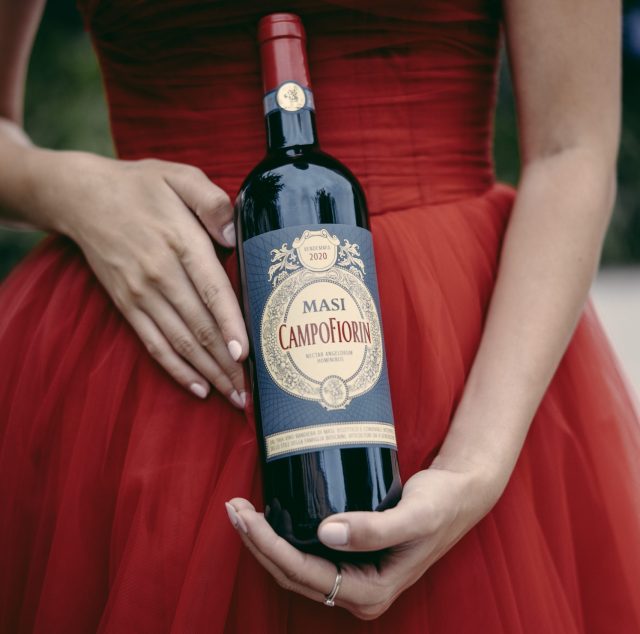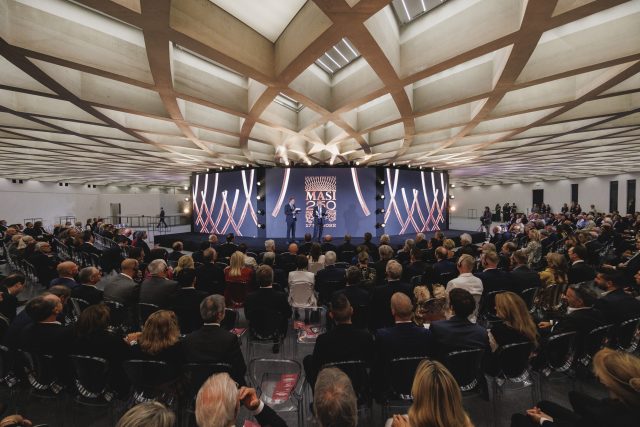This website uses cookies so that we can provide you with the best user experience possible. Cookie information is stored in your browser and performs functions such as recognising you when you return to our website and helping our team to understand which sections of the website you find most interesting and useful.
Why Masi is revamping Campofiorin
Valpolicella-based producer Masi has refreshed the identity of its Campofiorin Rosso Verona IGT both inside and outside the bottle, as brand ambassador – and seventh generation member of the family that owns the Masi Group – Giacomo Boscaini reveals to db.

The 1964 vintage marked the beginning of Campofiorin. This was the origin of Ripasso and the dawn of a new category of Veronese wines. At the time, Boscaini said that the state of wine in Veneto was very different: “Wine from the region was for domestic consumption. There weren’t many important bottles coming from Valpolicella.”
Guido Boscaini, Giacomo’s grandfather, sought to, in Giacomo’s words, create a new wine “for the international palate and international market…he wanted to make a wine between easy-drinking Valpolicella and complex Amarone – something clean and approachable.”
A blend of Corvina (usually around 70%), Rondinella (25%) and Molinara (5%), the same Veronese varieties that have been used for all subsequent vintages.
The Ripasso technique involves a re-fermentation, usually in January or February, with the leftover pomace from Amarone production. Boscaini noted how “Ripasso” can create wines with greater “structure, perfume and complexity”.
Masi even trademarked the term ‘Ripasso’, though it would release the use of the term around the turn of the century.
However, while Masi pioneered the commercial use of this traditional technique in the modern age, in 2000 the company opted to move on from Ripasso for Campofiorin, and remove the term “Ripasso” from the label.
“Sandro [Boscaini, Masi Agricola president] decided to stop it as he wanted people to buy Campofiorin because it was Campofiorin, not because it was a Ripasso.”
The new technique, known simply as a ‘double fermentation’, involves the addition of semi-dry grapes (not previously used) to fresh wine. The second fermentation usually concludes in November. Boscaini also suggested that this shift away from using winemaking leftovers has also helped to bolster Campofiorin’s identity as a wine: “It’s not Amarone, Brunello or Bordeaux – it’s Campofiorin.”
The 2020 vintage, due to be released in the coming months, both differs from the style of the previous decades and sports a new label.
“We decided that we wanted to restyle the packaging and wine – we didn’t want to change its nature. It has to be versatile and very well balanced,” Boscaini explained. “We took the occasion of the new vintage to be reminded of what Campofiorin was, and what it will be.”
The new label both pays homage to the older vintages of Campofiorin, and looks to Masi’s future as a brand. Concerning the former point, it is rectangular, as that of the 1964 was, making for, as Boscaini said, “a more elegant, more sophisticated design”. As for the latter, it sports a lattice pattern evoking the ceiling of the new, hyper-modern Monteleone21 facility, unveiled to the world press at Masi’s 25oth harvest celebrations last October.

The bottle has also been changed to a taller, slimmer design than previous vintages – more in line with that of “big brother”, Brolo Campofiorin.
Whereas previous 21st century vintages used about 75% fresh grapes and 25% dried grapes, the 2020 opts for a 70/30 split.
While the shift has resulted in a greater flavour concentration and more perceptible tannins, the alcohol level (13.2% ABV) and sugar concentration (3.2g/l) is within the parameters set by previous vintages.
The decision to create a nevertheless bolder wine might seem odd, given that there has been a general consumer shift towards freshness, but Boscaini declared: “Campofiorin deserved more structure.”
That structure bodes well for the 2020’s ageing potential, perhaps Campofiorin’s greatest strength relative to its price, which is around £15-£20 off-trade.
A vertical tasting of vintages from 1999 (which was still made with Ripasso) through to the soon-to-be-released 2020 demonstrated that affordability does not necessarily mean early drinking is required. Vintage variation aside (Boscaini suggested that the best, “five star” vintages were “generally warm”), what emerged is that the wines, even the ’99 that was vinified more than 20 years ago, retain freshness. The total acidity of each of the vintages tasted was in the 5 to 5.3g/l range.
The older vintages still had an “exuberance”, as Boscaini described it, of fresh red cherries with a subtle perfume of dried red fruit indicative of the proportion of appassimento grapes added.
Looking at how Campofiorin has grown over almost sixty decades, Boscaini noted that in some key international markets it has overtaken Masi’s renowned Amarone.


